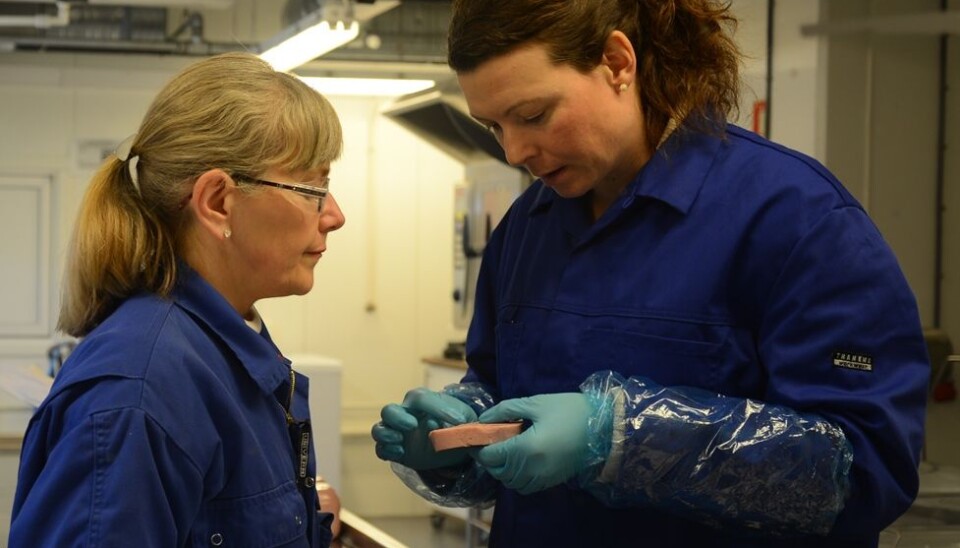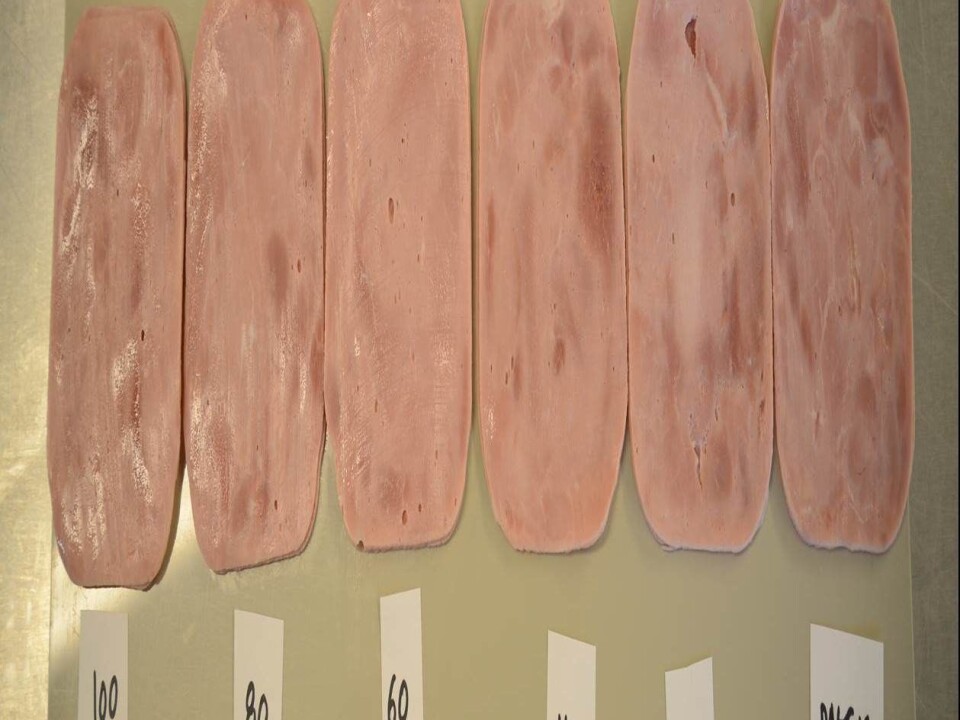An article from Norwegian SciTech News at SINTEF

30 percent reduction of salt in food
It is entirely possible to reduce the salt content in a range of foods by up to 30 prosent without reducing the taste.
Denne artikkelen er over ti år gammel og kan inneholde utdatert informasjon.
Salt has been used for centuries to improve the taste of food while also helping to preserve it. However, we have become increasingly aware over the last few decades of the dangers of salt.
High sodium consumption can result in high blood pressure, which in turn increases the risk of cardiovascular disease.
The World Cancer Research Fund also believes that one in seven cases of stomach cancer are caused by an excessive salt intake.
Meat products and cheese
SINTEF is now working closely with the food industry in the three year SALTO project. As well as reducing the salt content of three types of meat products – meat paste, sausage meat products and cooked ham, and one type of cheese, Norvegia – they are examining the storage life and consistency of the products after their salt content has been changed.

"When we studied cooked ham made by suppliers to the catering industry, we found that the sodium content could be cut by 25–30 percent, without any effect on the properties or taste of the product", says Doctoral Research Fellow Kirsti Greiff of SINTEF Fisheries and Aquaculture.
These products were chosen because they are popular foods in Norway, and could help to improve the health of the nation.
Too much salt
According to WHO Europe, a reduced salt content is one of the five most significant factors affecting people's health. The Norwegian health authorities would like to gradually reduce salt content, and want adults to be consuming no more than 6–7 grams per day by the year 2018, and a maximum of 5 grams by 2025.
We are currently eating roughly double the amount of salt recommended by WHO. The daily recommended dose of 6 grams can fit onto a teaspoon; in other words, it doesn't take much extra salt to go over the limit. Children should eat even less salt than adults.
Difficult to control
However, getting people to control their own salt intake is extremely difficult. According to WHO, the consumer is only able to control about 20 percent of their salt intake. The food industry is responsible for the rest, about 70–80 percent.
"A manufacturer is not obliged to disclose how much salt is in a product. Another problem is that there are no guidelines as to what information should be included on a product declaration, for those instances when the salt content is actually declared. That makes it hard for the individual consumer to know how much salt he or she is actually consuming", says Kirsti Greiff.
Some suppliers declare the sodium content, whereas others tell consumers about the salt content.
Greiff points out that consumers tend not to be aware that sodium and sodium chloride are not the same thing.
"Not everyone knows what ratio of sodium is in salt. 1 gram of salt is equivalent to 0.4 grams of sodium, and conversely, 1 gram of sodium is equivalent to 2.5 grams of salt (sodium chloride, abbreviated to NaCl)."
Realistic salt substitutes
Consuming too much sodium can damage people's health. The lower the sodium level, the better this is for people's health.
According to the researcher, potassium chloride is a popular salt substitute, and the Norwegian Food Safety Authority has asked the Norwegian Scientific Committee for Food Safety (VKM) for a risk-benefit assessment about the increased use of potassium chloride in food production, since there is little scientific data with which to establish an upper tolerance level for a person's potassium intake.
Reducing the content of sodium chloride below a certain level means having to add other ingredients that bind water.
"In our studies, we have replaced 30 percent of sodium with potassium, without creating an undesirable bitter taste. A third of the total salt content was taken out, without any changes to the consistency of the ham or reduction in its ability to retain water", says Greiff.
In the trials, a trained panel of judges at the Norwegian Institute of Food, Fisheries and Aquaculture Research (NOFIMA) was used to assess the changes in taste, consistency and appearance of the ham. In parallel with this, pictures were taken of the products with SINTEF Foodscanner, a device that has been developed in order to be able to see the difference in surface attributes such as colour and surface texture.
"We will soon perform similar tests with salt-reduced ham on ordinary consumers", says Greiff.
Also testing herbs
SINTEF is also working with the Norwegian Institute for Agricultural and Environmental Research (BIOFORSK) on parallel research into various herbs that could be used as flavour enhancers. The herbs they have been testing do not have a particularly strong flavour themselves, since that would alter the taste of the product too much.
According to the researcher, oregano and winter savoury are two herbs that have a more neutral taste, and these are to be studied more closely – not just with regard to taste, but also with regard to whether they can prevent bacteria from growing, otherwise known as the antimicrobial effect.
Make salt the last thing
The researcher has two pieces of advice that could be worth following if someone wants to reduce their salt intake.
"You can cut down on salt by gradually using less of it. It is also claimed that you notice the taste of salt more if you sprinkle it on immediately before serving, rather than mixing it into the food", says Greiff. She also thinks that consumers should be more aware of the salt content of the food around us, and choose foods with the lowest sodium content.
"I notice that the food producers have been focusing much more on reducing sodium, and that shelves are now being stocked with more products that contain less sodium".
































